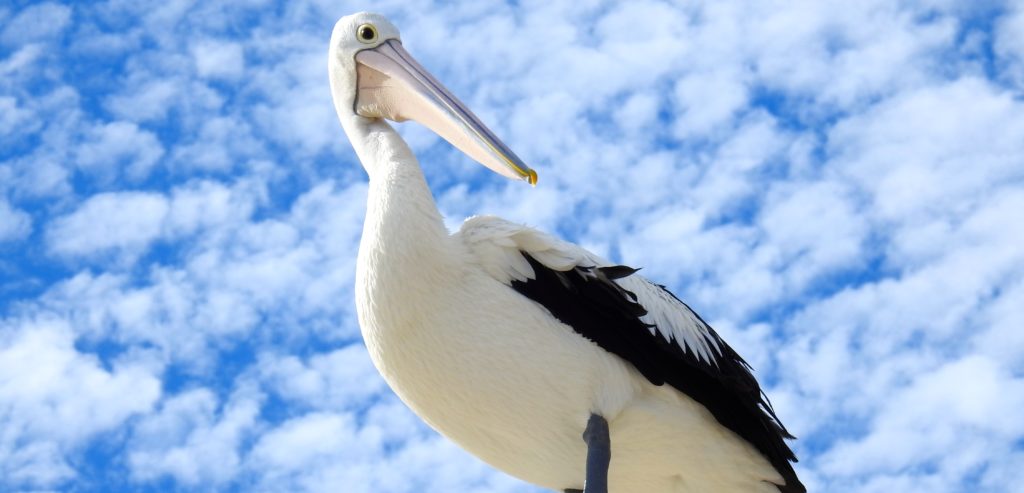
Resident Pelican at Tangalooma surveying his kingdom.
Table of Contents
Poem for Pelicans
“Wonderful birds are pelicans
Their bills will hold more than their belican.
They can take in their beak
Food enough for a week,
But I’m damned if I see how they helican.”
Ok, so I haven’t been around the world yet checking out all varieties of pelicans. But…as Baby Boomer age has arrived, I find myself relating to the antics of the fascinating varieties I have met. (Please note this isn’t an Ornithological report just a ramble of observations!)
However – the poem is actually right.
A pelican’s pouch near its bill will indeed hold more than its belly. The pouch will hold up to three gallons (14 litres) of water, whereas its stomach will only hold about one gallon (4.5 litres)
These gigantic and pristine birds, – sometimes with a wing span of three metres – enjoy their snooze time. And….much as I try to refrain from having nana naps on a daily basis, there is the odd occasion where I find my eye lids touching each other.

Aussie Pelican – snoozing at Tangalooma.
Pelicans Around the World
There are eight species of pelicans in the world –
Australian, American, Brown, Peruvian, Great White, Pink-Backed, Dalmatian and spot-billed.
Those in red are all I’ve seen, although the big American pelican is in my sights over the next two months when visiting that side of the world.
Australian Pelicans
Being in my own backyard, these pelicans are those I’ve witnessed the most.
Technical snippet – when it eats, the pelican catches prey in its large gular sack, squeezes the water out the side of its bill, moves the food until it is facing head-down in its throat, and swallows.
These two pelicans fought over a fish and locked bills for what seemed like hours at Iluka, a fishing village on the coast of northern New South Wales. The bird that had the fish initially won the fight and eventually with one last toss won the battle. But…the fish flipped sideways and wouldn’t go down Percy’s gullet! The Pelican tossed his head this way and that and I’m guessing was eventually digested.
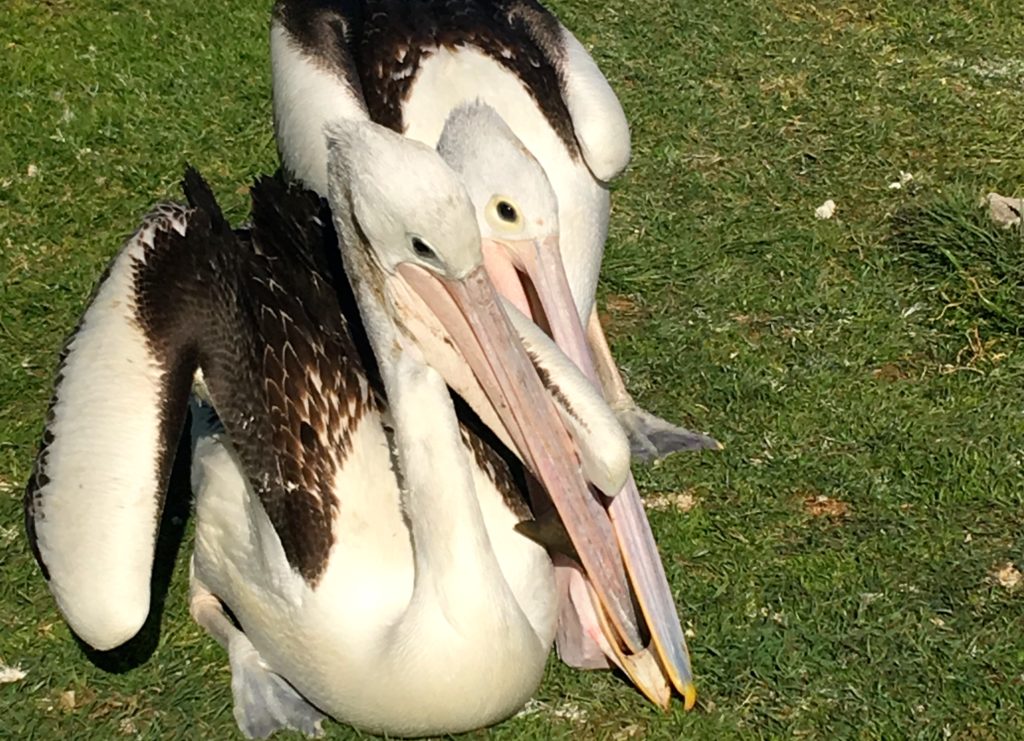
Go find your own fish!
Oops!
This over zealous Pelican at Moreton Island mistook another’s beak for a fish!!

Oops – thought that was a fish!
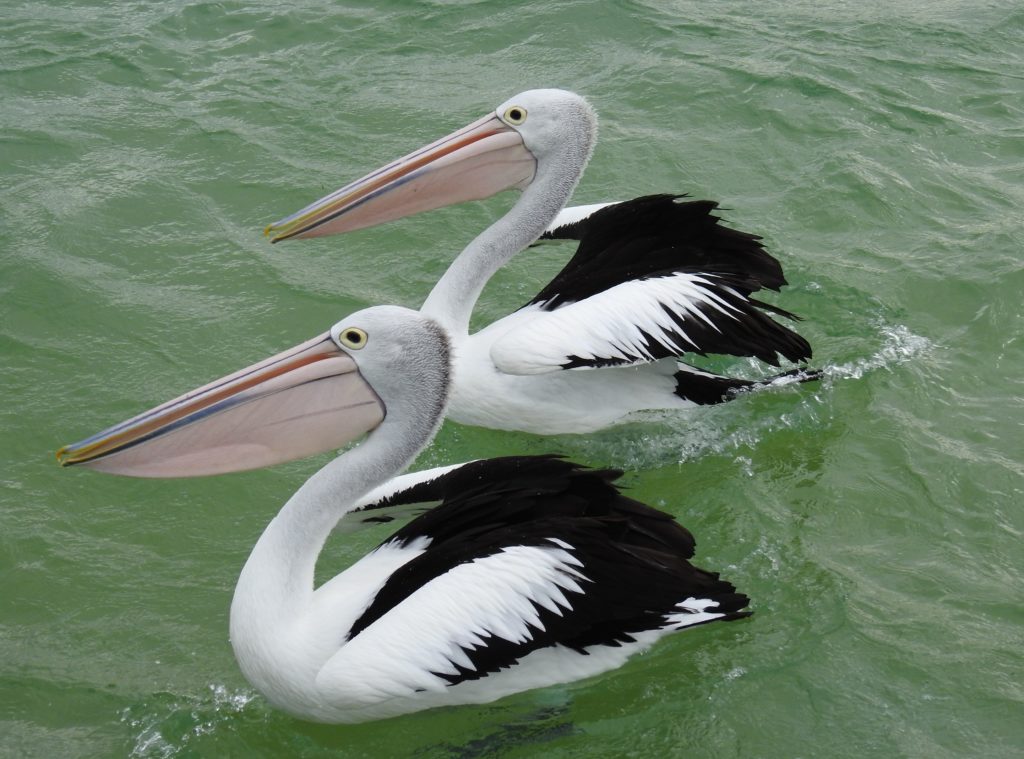
Bookend Australian Pelicans
With an awkward gait, pelicans meander along the beaches looking a bit like Boomers – lets face it, we all lose the spring in our step at some stage. But in flight they look beautiful.
Pelicans in Flight.
Do you know why they fly so low over the water looking like a plane about to land?
It’s because they’re taking advantage of what is called “slope lift” – a light upward breeze that reflects from the tops of waves. How cool is that!
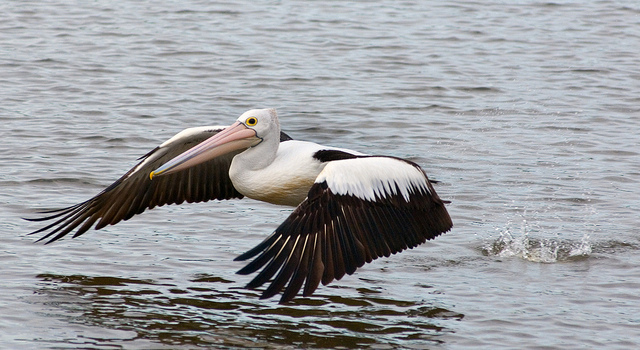
Australian Pelican skimming over the water (photo credit – Brisbane City Council)
Peruvian Pelican
These birds I literally bumped into, because there were hundreds of them, at Punta Sal – a fishing village in the north of Peru – a five star resort for these guys.
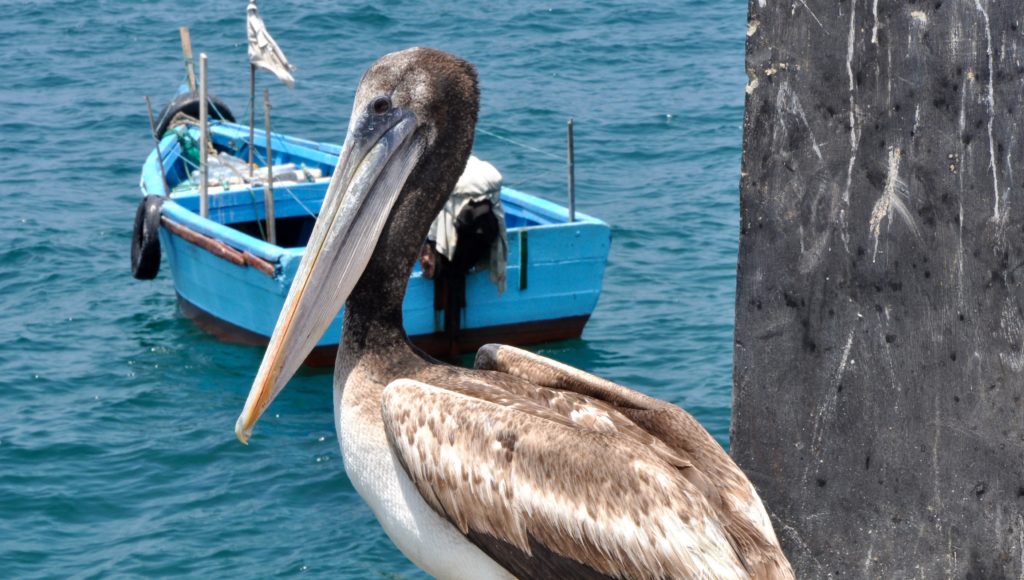
Peruvian Pelican surveying his kingdom.
Interestingly, they are the only species to dive into the water from up to 65 feet above to get their catch and have special air sacs underneath their skin that inflate just before impact with the water to protect their insides!

Diving for fish
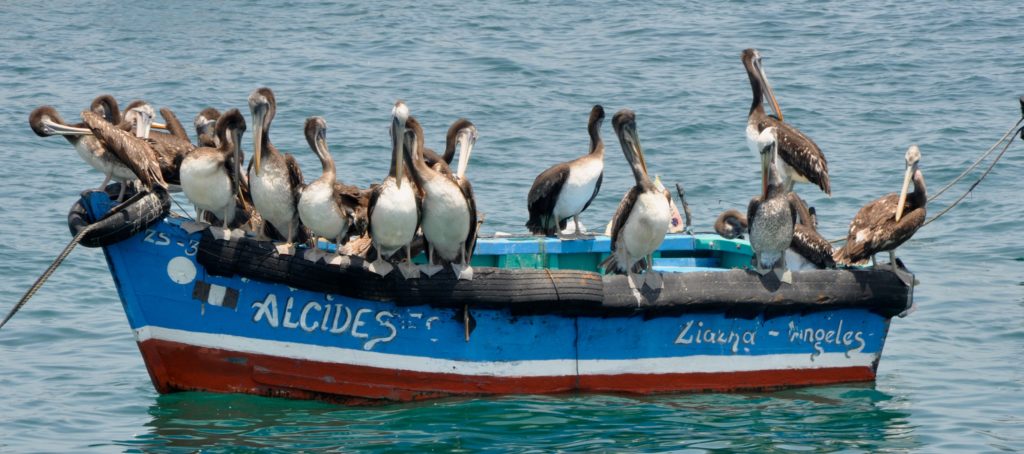
Time for a spring clean of the feathers!
Dalmatian Pelicans
These are the largest breed of pelicans and grow up to 1.8 metres (nearly 6 ft in length).
The most famous Dalmatian pelican in the world is Peter (Petros or Pete) who wanders the waterfront of idyllic Mykonos in the Greek Islands on daily basis.

Peter, or Petros, or Pete – wandering the streets of Mykonos.
He is actually Petros the 2nd – his predecessor unfortunately met with an accident in 1985. Pink in colour, Petros can often be seen strolling at an unhurried pace through the city’s many alleyways and cafes. He is naturally fond of the harbour area and the fish that are donated for his dinner by generous fishermen.

Peter the proud old pelican at Mykonos. (photo credit Glenn Steiner)
Pre-historic in appearance?
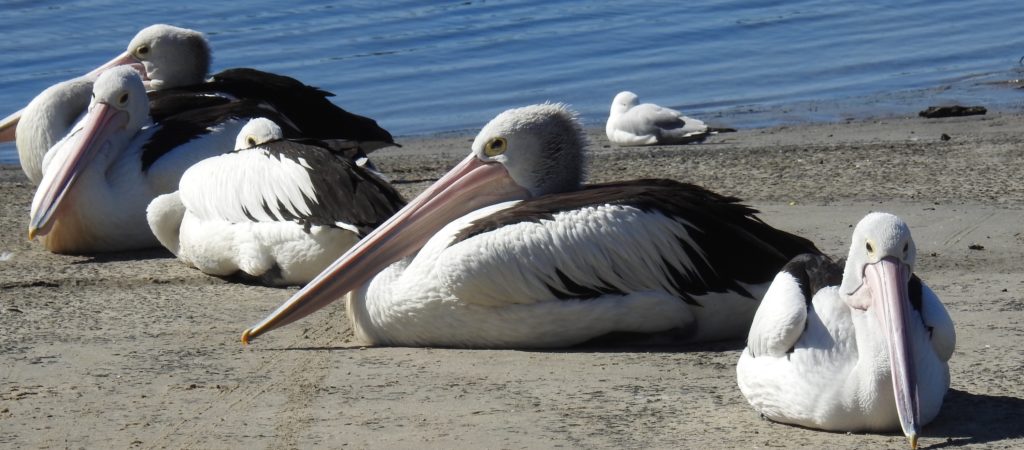
When you think about it, Pelicans do look a little on the prehistoric side. This is because their features haven’t changed much over the last 30-40 million years. (Most of us can relate to feeling pre-historic at some stage of our lives!)
With an average life span in the wild of 10 to 25 years and up to 54 in captivity that brings them much closer to the age of Baby Boomers!
Happy Hours and Sunsets
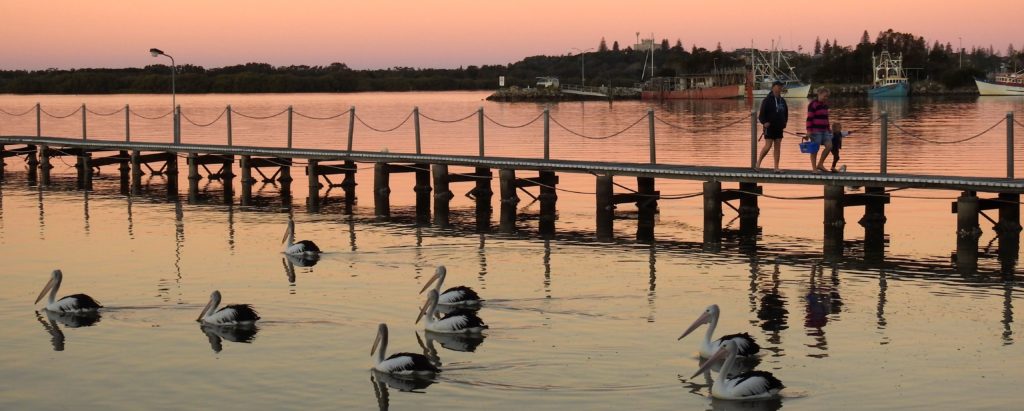
Aussie Pelicans at Sunset, Yamba, New South Wales, Australia.
A favourite spot of ours for both Pelicans and Sunsets is at Yamba, New South Wales, Australia
Do you have any Pelican photos or stories to share?
